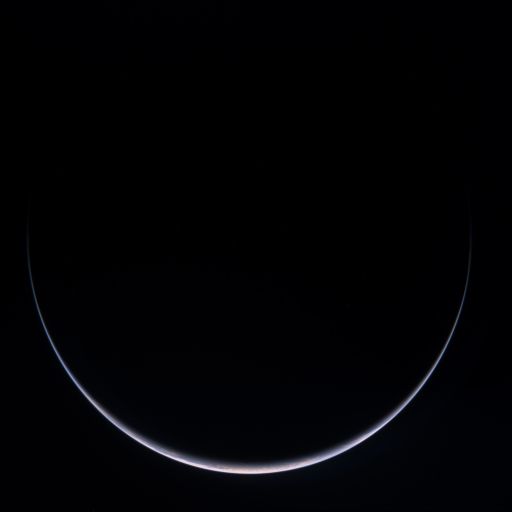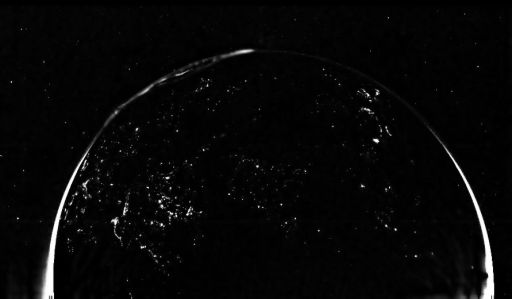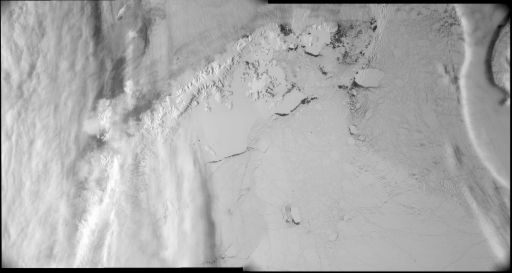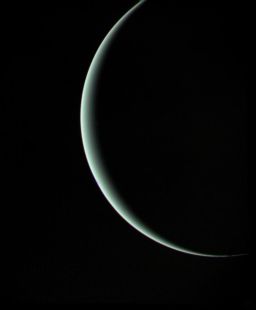Emily Lakdawalla • Nov 14, 2007
Rosetta's Earth flyby successful; and they got pictures too!
At 20:57 UTC yesterday, Rosetta passed within 6,000 kilometers of Earth, picking up a gravity assist for a change in speed and direction, routing it onward to -- Earth. It'll be coming back for its last visit in two years; in the meantime, though, it'll have its first asteroidal encounter, with 2867 Steins on September 5, 2008. ESA's bloggers were busy all night long, and this morning, they began posting images from the flyby, fresh off the spacecraft. Via that blog comes the news that the flyby went off almost without a hitch (just one minor problem with one of the star trackers, which has since been recovered). As of this moment, the spacecraft is downlinking more data and pictures to Earth via NASA's Goldstone station. Before I go on to show you those pictures I just want to commend ESA for doing a fantastic job of public outreach on this flyby! I want to extend a great big thanks for the blog coverage and quick posting of new images.
OK, on to those images. Here's what Earth looked like to Rosetta two hours before closest approach, in a color image from the OSIRIS wide-angle camera:

ESA © 2005 MPS for OSIRIS Team MPS / UPD / LAM / IAA / RSSD / INTA / UPM / DASP / IDA
Crescent Earth
This unusual photo of a crescent Earth was taken by the OSIRIS wide-angle camera on Rosetta about two hours before closest approach on its second Earth flyby, at 19:05 UTC on November 13, 2007. Antarctica lies at the bottom of the crescent.
ESA © 2005 MPS for OSIRIS Team MPS / UPD / LAM / IAA / RSSD / INTA / UPM / DASP / IDA
Earth's night side
Rosetta's OSIRIS wide-angle camera opened the shutter for five seconds to capture this view of nighttime over the Indian Ocean; the night side of Earth is peppered with bright lights from cities. The view is primarily of the northern hemisphere, with India at the center. Eastern Africa is at lower left; almost all of Europe is visible to the upper left, and almost all of eastern Asia to the upper right. The view is cut off because the long exposure saturated the sunlit crescent of Earth to the south. The photo was taken about two hours before Rosetta's closest approach, at 18:45 UTC on November 13, 2007.This next image (actually a mosaic of two images) was taken by Rosetta's navigational camera just a minute before closest approach, showing part of Graham Land, the pointy part of Antarctica that juts toward the southern tip of South America. This one is best appreciated if you click to enlarge; there's beautiful topography on the land and broken-up sheets of ice in the ocean.

ESA / mosaic by James Canvin
Rosetta's closest approach to Earth
At the moment of Rosetta's closest approach to Earth on November 13, 2007 at 20:56 UTC, it was snapping away with its navigational camera, capturing photos of Antarctica lying 5,500 kilometers below. This image is composed of two Navcam frames taken one minute apart over Graham Land, the Antarctic peninsula that points toward the southern tip of South America.Rosetta is a true interplanetary spacecraft, having gone to Mars and back. The photos it's returned from this flyby make me see Earth anew, as just one among many fascinating planets in our solar system. Maybe I'm biased, but looking at Earth from the perspective of an interplanetary voyager, I'd have to say it'd be the most fascinating of the planets. In some places, it's an ice world; in other places, liquid water rules. It has an atmosphere thick enough to form clouds that obscure its surface, but thin enough to allow the surface to peek through, and the dynamics of that atmosphere are mesmerizing. And it's so colorful -- bright ocean blue, the greens of jungles and yellows and reds of deserts and mountains and white of ice and cloud. It's like how I love to travel, to see and hear the natural and cultural treasures of other countries, to smell the air and taste the food; but I am always grateful to return home.


 Explore Worlds
Explore Worlds Find Life
Find Life Defend Earth
Defend Earth


